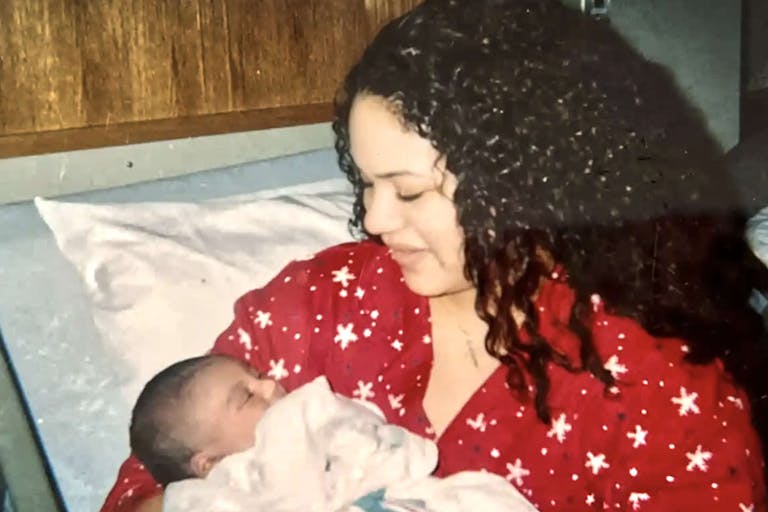
She chose life for her children, no matter what the future might hold
Melina Nicole
·
Unholy Alliances: How divorcing sex from procreation married two movements
In 2023, Planned Parenthood Action claimed that abortion and ‘transgender care’ go ‘hand-in-hand.’ But few know the history behind transgender ideology and why the nation’s number one abortion provider became so invested in trying to reach young people with pro-transgender sex-ed materials and services.
Activist groups such as Advocates for Youth (AFY), Planned Parenthood, SIECUS, and other organizations aligned with the Future of Sex Ed coalition, continue to shape society by employing digital platforms, educational programs, and a variety of resources to promote abortion, birth control, and transgender ideology. These radical groups seek to counteract parental rights and re-engineer the attitudes of future generations.
Many Planned Parenthood donors are beginning to question why the organization's mission appears to have shifted — but has it, really? As this series will show, pro-abortion and transgender ideologies have been linked for a very long time.
Parents and lawmakers must first understand where these ideas came from in order to combat them.
(Read Parts Two and Three of this series at the links.)
A look at the history of collaboration between abortion advocates and advocates of transgender ideology reveals shared, disturbing philosophies.
These advocates all believed in the idea that minors can give "consent" to any number of things related to sex — sexual activity, abortion, and 'gender transition.'
Over the past two centuries, efforts were made to distinguish between homosexuality and those who committed child sexual abuse (leading to the classification of 'pedophiles'). Then, those who held to the idea that children are 'sexual from birth' and can 'consent' led efforts to sympathetically portray pedophilia as 'innate' and acceptable with 'consent'.
Efforts were also made to distinguish 'sexual expression' as separate from procreation, drawing in the cooperation of pro-birth control and pro-abortion eugenicists.
Disturbing philosophical ideas led to early "sex reassignment" experimentation; one of the doctors performing the earliest surgeries had participated in torturous experiments on human victims within the Nazi regime.
Neuroscientific and psychological communities have long understood that a minor's brain development, particularly the maturation of the prefrontal cortex, is not complete until 22-25 years of age. The prefrontal cortex regulates behavior, assesses risk, and enables comprehension and proper planning. Consequently, children, minors, and young adults are particularly prone to engaging in risky or dangerous behavior. They cannot developmentally comprehend potentially life-long detrimental consequences.
Yet, despite this scientific reality, the idea that youth can provide ‘consent’ for sex, life-ending abortions, and life-altering ‘gender-affirming care’ is promoted by purveyors of comprehensive sex education.
This idea is foundationally based on concepts propagated by early proponents of the transgender movement.
After World War I, severe economic hardship in Germany contributed to widespread prostitution in Berlin, involving minors and children. As awareness of child development and the harms of sexual abuse grew in the late 1800s and early 1900s, documented abuse cases prompted efforts to distinguish homosexuality from child sexual abuse (p. 271). Consequently, at the turn of the 20th century, "sexual scientists" began using the term "paedophile" to describe child sexual abusers (p. 271).
While Karl Ulrichs (1825-1895) certainly isn’t a household name, this German attorney and writer's theories about sexuality influenced many prominent psychoanalysts and “sexologists,” including Sigmund Freud, Magnus Hirschfeld, and Alfred Kinsey — and are influencing many ideas still promoted today.(1)
Ulrichs believed that homosexuality is innate or natural – an idea still echoed by Planned Parenthood and other groups today when attempting to explain sexual orientation. (2) Often referred to as the “grandfather of gay liberation,” Ulrichs is also recognized in LGBTQIA+ circles as an early advocate closely linked to the transgender movement.
Ulrichs coined the term “Urnings” to describe homosexual men and defined them as a superior and a “special sexual species… similar to hermaphrodites… a third sex… independent of the male or female sex.” He believed that same-sex attracted males had all of the genetic ‘benefits’ of the male body (physical strength and dominance) but the ‘soul’ of a woman (tenderness) — what is now often characterized as having been “born in the wrong body." (3)
Ulrichs attempted to separate public, legal, and psychological views of homosexuality from pedophilia. Yet, it was his dependence on his concept of ‘consent’ which blurred the lines of distinction between the two. This idea — that all things are permissible so long as the person, even a child, provides ‘consent’ — is still promoted today by sex educators and transgender-affirming groups.
Though Ulrichs remained vague in his view of pedophilia, he provided a public defense of convicted pedophile Johann Baptist von Schweitzer and others. (4)
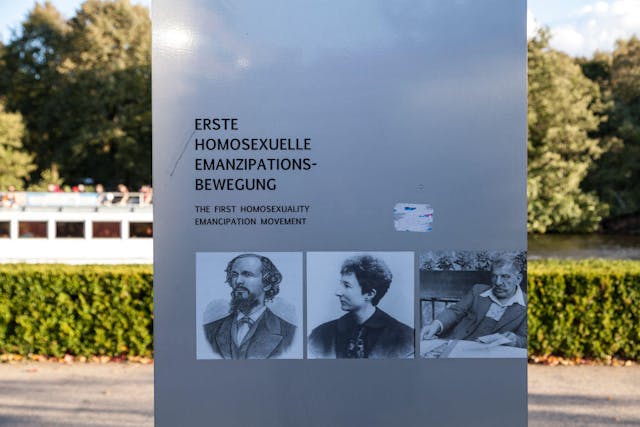
Influenced by Karl Ulrichs, physician Magnus Hirschfeld (1868-1935) also believed homosexuality was innate, and incorporated transvestism (coining the term transvestite) into his theory of sexual intermediaries, which he believed were “naturally occurring sexual variations found across the human population.”(5)
In 1919, he founded the Institute for Sexology (or Institute for Sexual Science). After World War I, the Institute aimed to establish sexology as a recognized academic discipline and became a model for later sexology and sex reform institutions in Germany and the U.S. This included the Kinsey Institute, founded by Alfred Kinsey, whose ‘research’ was obtained from child molesters recruited to report, in detail, their sexual abuse of children. This ‘research’ went on to influence sex ed in America. (6,7)
Hirschfeld’s motto, "Through science to justice," outlined his Institute's desired mission for sexual reform; the Institute experimented on individuals through early cross-sex hormone use and sex-change surgeries. (8)
Hirschfeld, following the example set by Ulrichs, aimed to separate male homosexuality and pedophilia in the minds of the culture. However, his definitions of childhood and adolescence remained ambiguous, with a keen focus on 'consent' (p. 270). Authors Fisher & Funke note that this idea of consent "assumed a key role in attempts to legitimize same-sex behaviours" (p. 270).
Hirschfeld held complex views on homosexual relationships with significant age gaps and on pedophilia, which he explained in his 1948 collection, “Sexual Anomalies.” His theory of “Sexual Transitions” involved “infantilism,” which he defined as stunted physical or emotional growth that caused an adult to remain in a child-like stage of development. Hirschfeld likened his theory to that of Sigmund Freud’s ‘infantile sexuality’ – the idea that infants and children are sexual from birth – and therefore, each milestone is inherently motivated by sexual desires, actions and responses.
Hirschfeld claimed that pedophiles were stuck in the “infantile sexuality” phase (which he termed “psychosexual infantilism”) and believed that they were essentially ‘born that way.’ He even provided sympathetic court testimonies on behalf of adult men who sexually victimized several young girls. Hirschfeld detailed their graphic abuse along with parts of his testimonies in a chapter of his book (p. 80-82).
Eventually, Hirschfeld added gynecologist Ludwig Levy-Lenz along with surgeon and professor Erwin Gohrbandt to perform early sex “reassignment” surgeries at the Institute.
Levy-Lenz led the department for women and wrote forensic reports on abortion procedures for one of the first known medical books about abortion.
Gohrbandt was part of the Nazi regime, serving as chief medical advisor (p. 36) for the German Air Force and helping to conduct torturous, deadly freezing experiments (p. 74-75) on Dachau prisoners. He participated in the Nuremberg trials, testifying for Oskar Schroeder, who was later convicted and sentenced for his participation in human experimentation.
Shockingly, despite his Nazi involvement, Gohrbandt continued to shape post-war Berlin medical policy and education through teaching, publishing, and drafting abortion policy.
When Hirschfeld's Institute later faced financial difficulties, its "research" activities ceased, and, working alongside other sex reformists, he shifted focus to medical and psychological services, advocacy for legal reforms, and public education regarding sexuality, abortion, and birth control. (11)
In the early 1900s, Hirschfeld — in his quest to normalize "sexual anomalies," — partnered with left-wing feminist eugenicist Helene Stöcker, in an effort to “distinguish sexual expression from procreation.”
Like Planned Parenthood founder Margaret Sanger, Stöcker was a neo-Malthusian. She advocated for “racial hygiene” and the use of birth control (p. 167). But unlike Sanger, Stöcker accepted and promoted abortion.
Stöcker believed that the “well-planned control of births” was the “religion of the future” (p. 171, 174). She co-founded “The League for the Protection of Mothers” and later the “International Union for the Protection of Mothers and Sexual Reform,” which received support from the Social Democratic government and the Communist Party of Germany and were heavily influenced by the policies of the Soviet Union.
Stöcker advocated for legalizing abortion and promoted easy access to birth control (12), believing that these were “every woman’s birthright” (13). Both Sanger and Stöcker believed "reproduction should no longer be left up to chance” (p. 175-177) and saw limiting and “planning” reproduction as a woman’s right and moral obligation to solve humanity's problems. They believed it upheld “national strength, racial purity, and human value” (p. 171). Stöcker and Sanger were both strategic and crucial in linking birth control and “reproductive practices” to eugenics and population control movements. Stöcker even blamed nations' continued fertility for World War II (p. 179).
In their partnership, Hirschfeld and Stocker broadened their agendas (he, fighting to decriminalize homosexuality; she, fighting for population control by decriminalizing birth control and abortion), placing them under the same banner — a combined fight for sexual reform to decriminalize homosexuality and abortion.
They felt they were stronger together and considered it all as fighting against sexual repression.
During the late 19th and early 20th centuries, Hirschfeld initially rejected the Darwinistic ‘degeneration theory’ which purported that sexual deviancy (including homosexuality) was a symptom of hereditary degeneration (p. 4). But by 1914, nearly five years prior to the opening of his Institute, Hirschfeld had shifted his position, writing in another book that he believed the condition of being ‘intersex’ was an evolutionary “means to preempt degeneration” (p. 439-61), since it eliminated the possibility of procreation.(14)
Population control advocates quickly realized how separating sex from procreation through birth control and abortion, in addition to so-called "sexual reform" (promoting sexual expression that does not produce offspring) would be to their agenda's advantage.
It is likely no coincidence that attempts to ‘transition’ youth today under the auspices of transgender ideology can do significant damage to their future fertility.
Ulrichs, Karl H. 2023. Research on the Riddle of Man-Manly Love. Vol. I. Jacksonville, FL: Urania Manuscripts, 7.
Ibid, 116.
Ibid, 28.
Ibid, 12.
Beachy, Robert. 2015. Gay Berlin: Birthplace of a Modern Identity. N.p.: Knopf Doubleday Publishing Group, 160.
Reisman, Judith A. 2003. Kinsey: Crimes and Consequences: the Red Queen and the Grand Scheme. N.p.: Institute For Media Education, 21.
Beachy, 186.
Ibid, 163, 186.
Ibid, 162.
Ibid, 163.
Ibid, 183.
Ibid.
Koonz, Claudia. 1987. Mothers in the fatherland. N.p.: St. Martin's Press, 36.
Beachy, 180-81.
Editor’s Note: This article is the first in a series, which will continue at Live Action News.
Live Action News is pro-life news and commentary from a pro-life perspective.
Contact editor@liveaction.org for questions, corrections, or if you are seeking permission to reprint any Live Action News content.
Guest Articles: To submit a guest article to Live Action News, email editor@liveaction.org with an attached Word document of 800-1000 words. Please also attach any photos relevant to your submission if applicable. If your submission is accepted for publication, you will be notified within three weeks. Guest articles are not compensated (see our Open License Agreement). Thank you for your interest in Live Action News!

Melina Nicole
·
Analysis
Cassy Cooke
·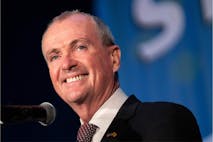
Politics
Cassy Cooke
·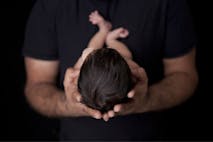
Analysis
Cassy Cooke
·
Analysis
Nancy Flanders
·
Newsbreak
Angeline Tan
·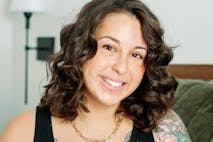
Human Interest
Sheena Rodriguez
·
Issues
Sheena Rodriguez
·
Issues
Sheena Rodriguez
·
Issues
Sheena Rodriguez
·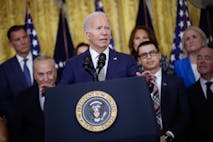
Politics
Sheena Rodriguez
·